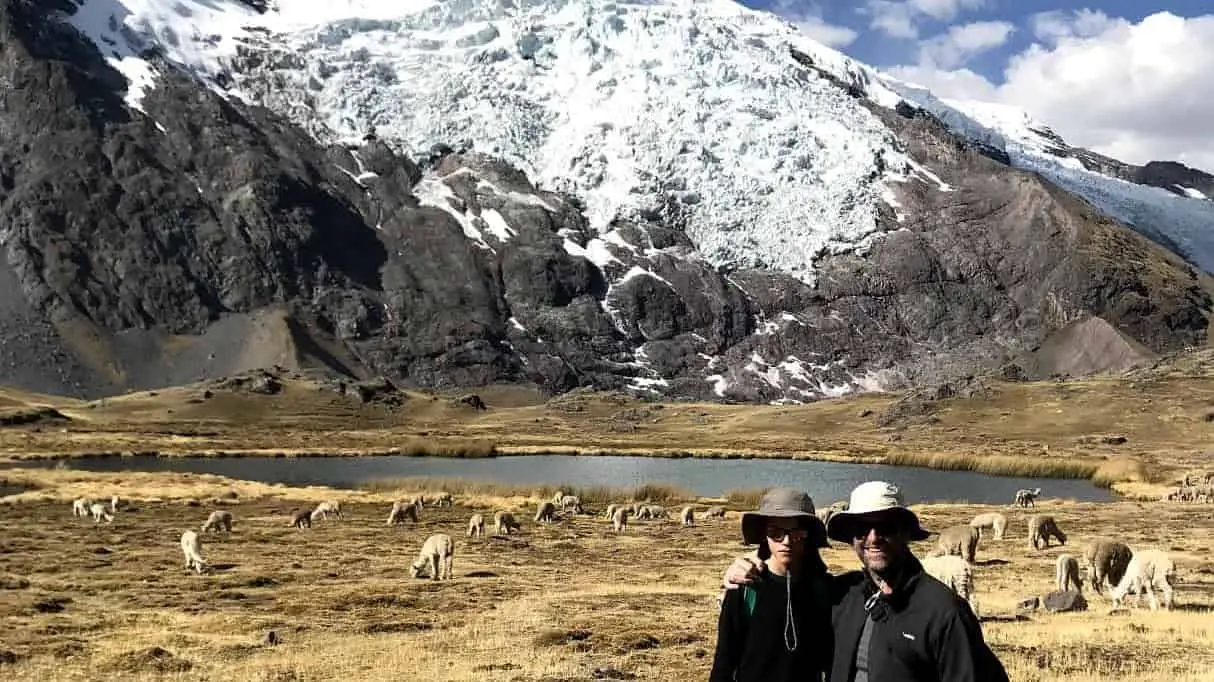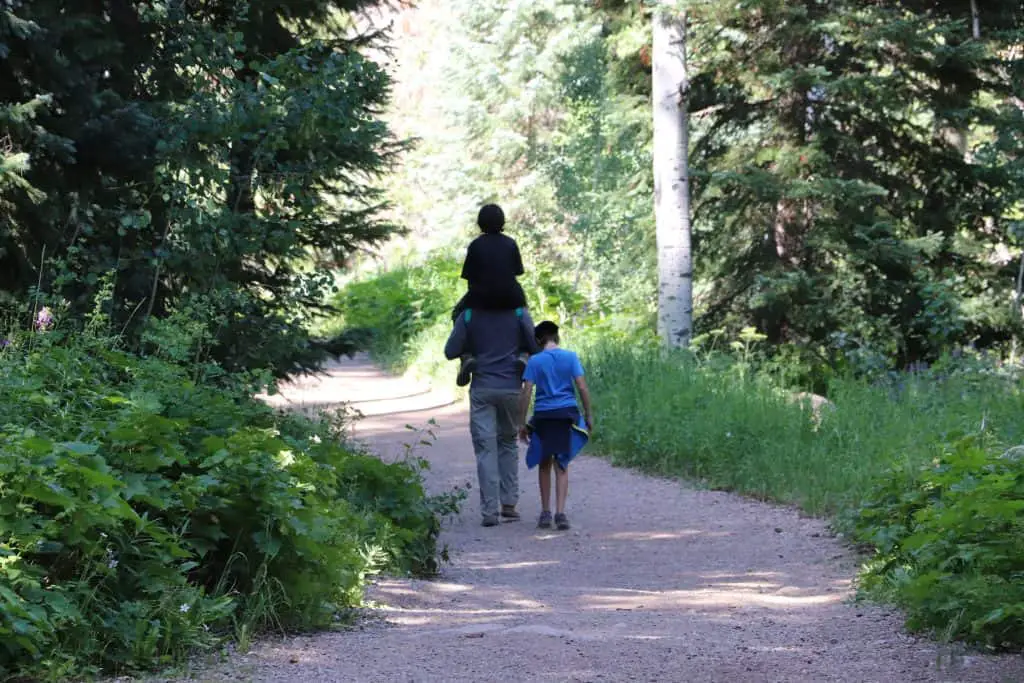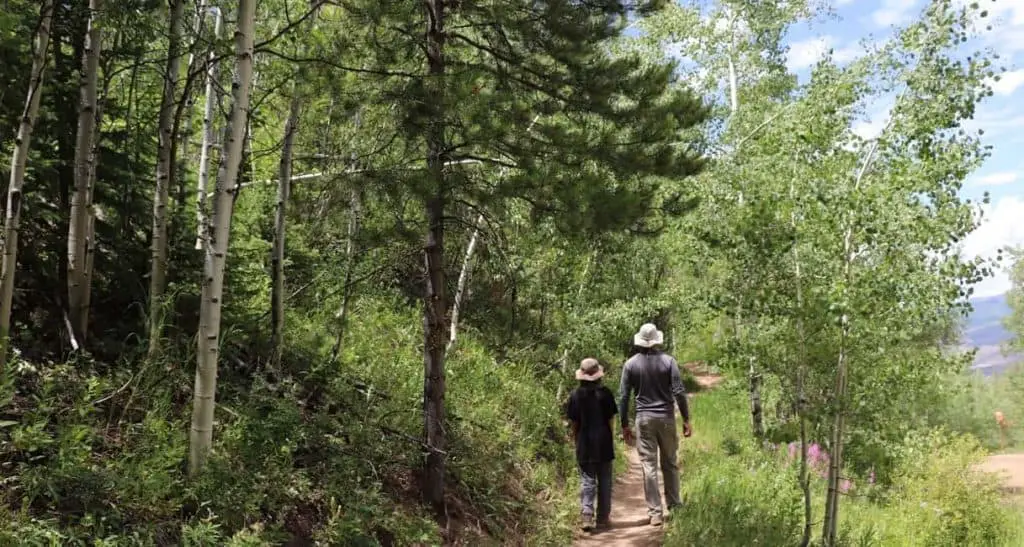Knowing how many miles you can hike per hour is crucial if you want to avoid getting caught out in the dark on the trail. There are a few easy ways to calculate your hiking speed in miles per hour. Understanding your hiking speed is vital whether you are planning a one-day hiking excursion or a longer trip.
An average adult can hike from two to three miles per hour or about three to five kilometers per hour. These speeds will vary greatly depending upon several factors, such as physical fitness, elevation, and trail slope.

How to Calculate Your Hiking Speed.
It is a good idea to clock yourself while walking at a normal pace before you are on a trail wondering if you will make it to a rendevous point on time. In order to figure out how many miles you can hike per hour follow these simple steps.
1. Identify a Walking Route of a Known Length.
For this I suggest going to a local track at a school. A standard olympic running track is exactly 400 meters per lap. If it is an older track in the United States it might be 440 yards per lap, but these are increasingly rare.
If you don’t have a track nearby you can use the ‘measure distance’ tool in Google Maps. Hover over your front door on Google Maps and right click then select ‘measure distance’ in the list. Then simply click on the map to measure a circuit from your front door, around a few blocks, and back to your front door.
Whether you walk on a track or around your neighborhood, I suggest that you walk at least a distance of two miles or three kilometers.
2. Walk the Route at a Normal Pace.
I do not suggest trying to beat your personal best for speed walking. If you are interested in knowing how many miles per hour you can hike, it is probably because you are planning a hike and want to be sure your calculations are correct. At a normal pace you should feel relatively comfortable over two miles, assuming an average level of fitness.
Time your walk over the route of a known distance that you have chosen. As you walk, make sure you are not pushing yourself. Your heart rate should be moderate, and you should not be breathing too heavily.
3. Divide the Distance by the Amount of Time You Walked.
If your units are all messed up, there is an easy solution to convert them into the miles per hour. For example, you may have walked 10,000 feet in 45 minutes. Divide the total distance by the amount of time you walked. Most smartphones will show the results in other units, such as miles per hour if you include the units in your question. Otherwise, if you recall your middle school math lessons, you could work it out on a piece of paper.
Factors That Will Significantly Impact Your Hiking Speed.
My son and I were preparing for a four-day hike at 14,000 feet with passes up to nearly 17,000 feet in Peru. He was ten years old, and during our three-hour-long walks on Saturdays, he was able to walk eight miles in three hours in the sweltering hot sun of South Texas. That was just 2.66 miles per hour on a flat path in high temperatures at sea level. On day three of our hike in Peru, we hiked from the base of a glacier up to Palomani Pass. The distance we traveled was about 1.25 miles but it took us about two hours. Although we were hiking two miles per hour slower than we did in South Texas, we were working three times harder.

Altitude.
Holding other variables equal, the amount of air pressure (and the amount of breathable air) will be reduced by 50% when you go from sea level to 17,000 feet elevation. Your body is an engine, and it needs air to power its muscles. My son and I were in decent shape and had trained for three months. Our pace was reduced from 2.66 miles per hour to just 0.6 miles per hour while climbing to the top of the high altitude passes in Peru. To keep moving, we used the rest step, a technique where you take one step and then pause to let your body rest before taking the next step.
When hiking at elevation your miles per hour will be reduced signficantly. If there is 50% less air to breath expect your hiking speed to be reduced by at least half.

Weight.
I was hiking with my family in Colorado in July at the Beaver Creek Resort near Vail. We took one of the chair lifts up and then walked along the Royal Elk Trail toward Beaver Lake and then back down to the Beaver Creek Village. At a certain point on our 9-hour hike my son asked to get on my shoulders. He weighs 100 pounds soaking wet.
When you are carrying a heavy backpack, or a child, the miles per hour that you can hike will be significantly reduced. While my son was riding on my shoulders, I kept the same pace more or less, but within a few hundred feet, I was ready to put him back down on the ground. I was breathing hard and had begun to sweat. If I had continued to carry him, I would have dramatically decreased my miles per hour.

Trail slope.
I can divide my colleagues at work into two groups: those that take the elevator up to our offices on the third floor, and those that take the stairs. You might have guessed which group I represent. On those days when the elevator is out of order, I playfully chide my elevator colleagues as they labor up the three flights of stairs, huffing, and puffing as if they had just sprinted 100 meters.
Hiking up a steep grade will dramatically decrease your miles per hour. On our hike in Peru, we often camped at around 14,000 and then each morning we would hike up a 2,000 to 3,000-foot elevation gain over the breathtaking passes. Sometimes it felt as if we were walking up a sand dune with a gag over our mouths. Hiking up a steep grade engages your glutes and your thighs – two massive muscle groups that are hungry for oxygen.

Hiking Partners.
Finally, one significant factor in your hiking speed will be the company that you keep. If you are on a long hike, you will need to stay in contact with your group for safety reasons. This means that your group can only hike as fast as the slowest person. For this reason, when you are estimating how long it will take to walk a section of a trail, you need to consider who you are hiking with and the pace they will be able to maintain. If you know that you can keep a two-mile per hour pace and you are the most durable hiker in your group, then you will need to perform your calculations for the hike at a slower pace.
